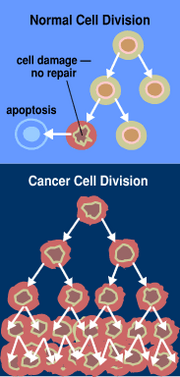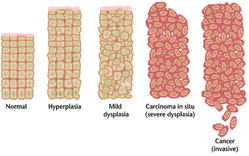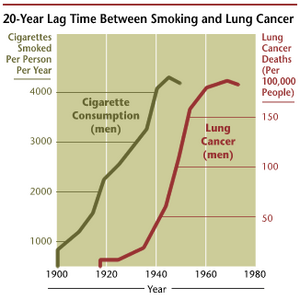Let's get the bad news out of the way: Although Black women don't get breast cancer as often as our White counterparts, we have the highest death rate from it of all racial and ethnic groups in this country. Now for the good news: By making certain lifestyle adjustments, staying up to date on screenings, and taking immolate action if you feel a lump in your breast, you can improve your odds. This is true even if your mother or sister has had breast cancer, or test results show that you have a genetic predisposition.
Take the following new and steps--some tried-and-true, others new and improved--to help protect your breasts:
eat well
No doubt you've heard that eating plenty of fresh fruits and vegetables is essential for overall wellness. According to Christine Homer, a surgeon and author of Waking the Warrior Goddess: Dr, Christine Horner's Program to Protect Against and Fight Breast Cancer (Basic Health), a plant-based diet may also decrease your breast-cancer risk. Fresh fruits and vegetables contain phytochemicals--Horner calls them natural medicines--that perform specific anticancer functions. For example, broccoli, collard greens and other cruciferous veggies are a source of indole-3-carbinol, a phytochemical that inhibits breast-cancer growth.
Another promising anticancer food is actually a spice. Turmeric, a potent antioxidant found in curry, helps prevent cell damage that may lead to cancer. The spice even has its own study at the University of Texas MD Anderson Cancer Center. where researchers are testing it as a chemical-free complement to other cancer-preventing drugs.
An easy way to get turmeric into your diet is to add about one third of a teaspoon to food at the end of cooking, or take a 1,000 milligram daily supplement (with your doctor's blessing, of course). For more information: Check out Homer's Waking the Warrior Goddess and The Strang Cancer Prevention Center Cookbook by Laura Pensiero et al (McGraw-Hill).
get moving
Regular exercise--even if it's just walking--may lessen your breast-cancer risk, according to a report published last spring in the Journal of the American Medical Association. Of nearly 3,000 women studied, those who performed moderate exercise such as walking three to five hours per week cut their risk of breast cancer by half.
According to Homer, exercise works by boosting immune function and decreasing the amount of "bad" estrogen the body produces. Bad estrogen causes breast cells to grow and divide at a more rapid speed, she explains. "The faster they divide, the greater the chance that a cancer mutation will occur."
If you're not doing it already, start walking for 30 minutes three or four times a week. Then work your way up to heart-pumping aerobic exercise. For more information: Read Breast Fitness: An Optimal Exercise and Health Plan for Reducing Your Risk of Breast Cancer by Anne McTiernan, Ph.D., et al (St. Martin's Press).
Watch your weight
Besides weighing down your body and spirit, excess pounds, particularly after menopause, ratchet up breast-cancer risk. Twenty to 30 percent of all postmenopausal breast cancers are thought to be due to obesity," Horner notes.
Although there have been uncertainties about the link between body size and breast cancer, "it's be Jeved that when there's excess fat in the body, it generates estrogen," says Harold P. Freeman, M.D., medical director at the Ralph Lauren Center for Cancer Care and Prevention in New York City.
If you're not sure how much weight you should be carrying, see your physician. In addition to determining your body mass index (BMI)--a measure based on your height and weight--ask your doctor or personal trainer to calculate your body-fat percentage. In women, body fat should not exceed 28 percent, Horner says. If it does, you'll be at high risk for health problems and should reduce body fat.
For more information: Visit the Centers for Disease Control and Prevention Web site (cdc.gov) and search for "body mass index" to calculate your BMI.
Hold the alcohol
Red wine has been touted as a cancer fighter because it contains antioxidants. But when it comes to staving off breast cancer, the risks of drinking red wine and all other alcoholic beverages may outweigh the benefits. According to research that links alcohol to breast cancer, just one drink a day--whether it s beer, a mixed cocktail or wine--can raise your risk by 20 percent.
Blame it on the hormones. Alcohol will increase the amount of estrogen the body produces, Horner explains. "It also increases a hormone called prolactin, which speeds up cell division in the breast." The National Cancer Institute recommends consuming no more than one drink per day.
For more information: Get alcohol facts and resources at ncadd.org, the Web site of the National Council on Alcoholism and Drug Dependence.
stop smoking!
Cigarette smoke is a threat to breast health. And the earlier you pick up the habit, the greater the damage. "If a girl starts smoking in her teenage years, her breast-cancer risk is 50 percent higher for the rest of her life." Homer says.
More surprising, recent research, including a study published this year in the International Journal of Cancer, has indicated that secondhand smoke contributes to breast cancer, even in pre-menopausal women. A combination of higher estrogen levels in younger women and the carcinogens may explain why. So avoid secondhand smoke. And if you smoke, quit right now.
For more information: The National Cancer Institute offers a Web site, smokefree.gov, with a guide to quitting, as well as a toll-free number for local support: (800) QUIT-NOW.
San Francisco freelance writer Ziba Kashef is the author of Like a Natural Woman: The Black Woman's Guide to Alternative Healing and Disease Prevention.
Nothing to Fear
Many of us feel nervous about getting a mammogram, especially if it's our first or if the last one was painful. These tips will reduce your anxiety--and any discomfort
In light of Black women's high breast-cancer mortality rates, we need to be vigilant about checking our breasts. Self-rams (see below) should start at age 20 as should clinical exams at the doctor's office.
Have your first mammogram (called a baseline because this X-ray records what is normal for your breasts) between the ages of 35 and 40. If you're at high risk for breast cancer, your doctor may recommend starting at 30.
Begin annual screening mammograms by age 40. (Some specialists advise women under 45, who tend to have dense breast tissue, to have ultrasounds as well.) Because mammograms use compression to detect lumps, they're uncomfortable. To minimize the discomfort and cope with fear:
Schedule your mammogram for the days following your period. Breasts are less engorged and tender, says Worta McCaskill-Stevens, an oncologist at the National Cancer Institute.
Rest assured that the mammogram itself will not give you breast cancer. "With advances in medical technology, the amount of radiation received in mammoFaphy is very minimal," says the Ralph Laumn cancer center's Harold Freeman. "The possible benefit of early diagnosis far outweighs the risk."
To relax before and after the test, by deep Breathing. Place one hand on your chest and another on your stomach. Take a breath in, counting to three, and let your stomach swell. Your chest should not move. Breathe outon a count of three. Repeat.
The correct breast self-exam
A step-by-step guide to this powerful early-detection tool
Despite headlines in the post that questioned their efficacy, breast self-exams, along with clinical exams and mammograms (see above), remain the gold standard of early detection. To catch potential signs of cancer, it's important to know how your breast tissue normally feels.
Guidelines for examining your breasts at home vary, but here are general steps:
1. Stand undressed in front of a mirror with your hands firmly on your hips. Look carefully for any changes--dimpiing of skin, discoloration, swelling or bulging, redness or an inverted nipple (pushed inward).
2. Raise both arms above your head and look again. Gently squeeze your nipples to see if there is any discharge.
3. Now lie down on your back, placing your left arm behind your head. Use your right hand to check the left breast. Start at the center edge of your left collarbone and work down. Press your finger pads deep into your breast tissue, moving either from side to side or straight down, in rows as if you were mowing a lawn. Make sure you cover the entire breast area, including the area under your breast and your armpit. Squeeze the nipple again and note if there is any discharge, pain or itching.
4. Repeat on the right breast. If you're unsure about your technique, ask your OB-GYN for a demonstration during your next exam.
SOURCES: The Breast Cancer Book (Yale University Press) by Ruth H. Grobstein, M.D., Ph.D.; breastcancer.org; cancer.org.
COPYRIGHT 2005 Essence Communications, Inc.
COPYRIGHT 2005 Gale Group




